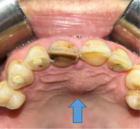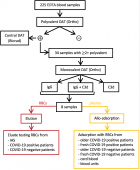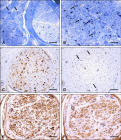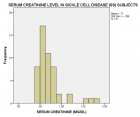Abstract
Research Article
Pyridostigmine-Induced Status Epilepticus Rat Model Was Resistant to Increasing Doses of Ramipril: The Latter Triggered Epileptogenesis, Arrhythmia, and Cardiac Ischemia in a Dose-Dependent Manner
Sherine Abdelmissih*, Monica Gamal and Kerollos M Naeem
Published: 20 March, 2025 | Volume 9 - Issue 1 | Pages: 010-027
Background: Studies explored the therapeutic role of agents inhibiting RAS in epilepsy. Fewer studies addressed the electrophysiological changes associated with angiotensin converting enzyme inhibitors (ACEIs) in terms of sustained seizures (status epilepticus). Sodium valproate (SVPA), a broad-spectrum anticonvulsant, has been associated with adverse cardiac events upon long-term use, in contrast to the beneficial role of ACEIs in cardiovascular disorders. This work explored the potential effects of ramipril, an ACEI, compared to SVPA, on the behavior, and electrophysiology of the brain and heart in a rat model of status epilepticus. The dose dependent pattern of the presumed ramipril activities was investigated.
Methods: Adult male rats were assigned into seven groups, controls, IP pyridostigmine (36 mg/kg)-induced status epilepticus (PISE), oral SVPA (5 mg/kg), and three groups receiving oral ramipril at respective doses of 5 (R5), 10 (R10), and 20 mg/kg (R20). Rat behavior was assessed using Racine’s motor convulsion scoring for 10 minutes. Blood pressure was recorded, and electroencephalography (EEG) and electrocardiography (ECG) were performed on the sedated rats 24 hours after recovery.
Results: Despite the partial behavioral improvement of motor convulsions with R5 and R10 exhibited epileptogenic activity, as indicated by the increased relative power of fast and slow gamma waves and total EEG power. R10 triggered arrhythmia and cardiac ischemia as indicated by absence of P wave, along with ST elevation and tall T wave, slowed heart rate and prolonged QRS, QTc, and RR intervals.
Conclusion: PISE was resistant to sodium valproate and ramipril. Ramipril at low and moderate doses induced epileptogenic activity and, especially at moderate dose, precipitated cardiac ischemia and arrhythmia.
Summary
The debatable role of ramipril in epilepsy was studied in a rat model of pyridostigmine-induced status epilepticus, compared to sodium valproate. Increasing ramipril doses did not resolve status epilepticus in rats. Instead, low and moderate doses exhibited epileptogenic activity, opposite to high dose ramipril and sodium valproate. Blood pressure was dose-dependently reduced with ramipril. Electrocardiography showed evidence of cardiac arrythmia and ischemia, especially with the moderate ramipril dose. The behavioral and EEG indices correlated with systolic blood pressure and ECG changes.
Read Full Article HTML DOI: 10.29328/journal.jnnd.1001106 Cite this Article Read Full Article PDF
Keywords:
Ramipril; Pyridostigmine; Sodium valproate; Racine’ scoring; Status epilepticus; Epileptogenesis; EEG; ECG; Ischemia; Arrhythmia
References
- World Health Organization. Epilepsy 2024 [updated 7 February 2024; cited 2024 8 July]. Available from: https://www.who.int/news-room/fact-sheets/detail/epilepsy
- Vezzani A, Scharfman HE. Epileptogenesis. In: Jasper's Basic Mechanisms of the Epilepsies. 5th ed. Oxford University Press; 2024.
- Xu C, Wang Y, Chen Z. Novel mechanism, drug target and therapy in epilepsy. Neurosci Bull. 2024;40(5):561-3. Available from: https://doi.org/10.1007/s12264-024-01215-0
- Dirican AC, Mutluay B, Eren F, Ataklı HD. Importance of long-term EEG in seizure-free patients with normal routine EEG. Arch Epilepsy. 2023;29(3):91-5. Available from: https://archepilepsy.org/articles/importance-of-long-term-eeg-in-seizure-free-patients-with-normal-routine-eeg/doi/ArchEpilepsy.2023.23078
- Janiukstyte V, Owen TW, Chaudhary UJ, Diehl B, Lemieux L, Duncan JS, et al. Normative brain mapping using scalp EEG and potential clinical application. Sci Rep. 2023;13(1):13442. Available from: https://www.nature.com/articles/s41598-023-39700-7
- Vorderwülbecke BJ, Wandschneider B, Weber Y, Holtkamp M. Genetic generalized epilepsies in adults—challenging assumptions and dogmas. Nat Rev Neurol. 2022;18(2):71-83. Available from: https://doi.org/10.1038/s41582-021-00583-9
- Sirven JI. Evaluation and management of drug-resistant epilepsy 2024 [updated 19 December 2023; cited 2024 8 July]. Available from: https://www.uptodate.com/contents/evaluation-and-management-of-drug-resistant-epilepsy
- Trinka E, Leitinger M. Management of status epilepticus, refractory status epilepticus, and super-refractory status epilepticus. Continuum (Minneap Minn). 2022;28(2):559-602. Available from: https://doi.org/10.1212/con.0000000000001103
- Ramos AJ. Brain angiotensin system: a new promise in the management of epilepsy? Clin Sci (Lond). 2021;135(6):725-30. Available from: https://doi.org/10.1042/cs20201296
- Chang KC, Lin CH, Huang JA. Use of angiotensin-converting enzyme inhibitors and angiotensin receptor blockers is associated with a reduced risk of poststroke epilepsy in patients with ischemic stroke. J Am Heart Assoc. 2024;13(17):e035438. Available from: https://doi.org/10.1161/jaha.124.035438
- Rusek M, Czuczwar SJ. A review of clinically significant drug-drug interactions involving angiotensin II receptor antagonists and antiepileptic drugs. Expert Opin Drug Metab Toxicol. 2020;16(6):507-15. Available from: https://doi.org/10.1080/17425255.2020.1763955
- Rathi V, Sagi SS, Yadav AK, Kumar M, Varshney R. Quercetin prophylaxis protects the kidneys by modulating the renin-angiotensin-aldosterone axis under acute hypobaric hypoxic stress. Sci Rep. 2024;14(1):7617. Available from: https://doi.org/10.1038/s41598-024-58134-3
- Booker HE, Goodfriend TL, Tewksbury DA. Plasma renin concentration and phenobarbital levels in patients with epilepsy. Clin Pharmacol Ther. 1979;26(6):715-7. Available from: https://doi.org/10.1002/cpt1979266715
- Saavedra JM, Armando I, Bregonzio C, Juorio A, Macova M, Pavel J, et al. A centrally acting, anxiolytic angiotensin II AT1 receptor antagonist prevents the isolation stress-induced decrease in cortical CRF1 receptor and benzodiazepine binding. Neuropsychopharmacology. 2006;31(6):1123-34. Available from: https://doi.org/10.1038/sj.npp.1300921
- Almeida SS, Naffah-Mazzacoratti MdG, Guimarães PB, Wasinski F, Pereira FEG, Canzian M, et al. Carbamazepine inhibits angiotensin I-converting enzyme, linking it to the pathogenesis of temporal lobe epilepsy. Transl Psychiatry. 2012;2(3):e93. Available from: https://doi.org/10.1038/tp.2012.21
- Łukawski K, Czuczwar SJ. Understanding mechanisms of drug resistance in epilepsy and strategies for overcoming it. Expert Opin Drug Metab Toxicol. 2021;17(9):1075-90. Available from: https://doi.org/10.1080/17425255.2021.1959912
- Łukawski K, Raszewski G, Czuczwar SJ. Interactions of aliskiren, a direct renin inhibitor, with antiepileptic drugs in the test of maximal electroshock in mice. Eur J Pharmacol. 2018;819:108-13. Available from: https://doi.org/10.1016/j.ejphar.2017.11.037
- Atanasova D, Tchekalarova J, Ivanova N, Nenchovska Z, Pavlova E, Atanassova N, et al. Losartan suppresses the kainate-induced changes of angiotensin AT1 receptor expression in a model of comorbid hypertension and epilepsy. Life Sci. 2018;193:40-6. Available from: https://doi.org/10.1016/j.lfs.2017.12.006
- Ivanova N, Tchekalarova J. The potential therapeutic capacity of inhibiting the brain renin-angiotensin system in the treatment of co-morbid conditions in epilepsy. CNS Drugs. 2019;33(11):1101-12. Available from: https://doi.org/10.1007/s40263-019-00678-4
- Subramanian D, Ayus JC. Case report: severe symptomatic hyponatremia associated with lisinopril therapy. Am J Med Sci. 1992;303(3):177-9. Available from: https://doi.org/10.1097/00000441-199203000-00009
- De Sarro G, Di Paola ED, Gratteri S, Gareri P, Rispoli V, Siniscalchi A, et al. Fosinopril and zofenopril, two angiotensin-converting enzyme (ACE) inhibitors, potentiate the anticonvulsant activity of antiepileptic drugs against audiogenic seizures in DBA/2 mice. Pharmacol Res. 2012;65(3):285-96. Available from: https://doi.org/10.1016/j.phrs.2011.11.005
- Tastemur Y, Gumus E, Ergul M, Ulu M, Akkaya R, Ozturk A, et al. Positive effects of angiotensin-converting enzyme (ACE) inhibitor, captopril, on pentylenetetrazole-induced epileptic seizures in mice. Trop J Pharm Res. 2020;19(3):637-43. Available from: http://dx.doi.org/10.4314/tjpr.v19i3.26
- Fialho GL, Miotto R, Cavagnollo MT, Melo HM, Wolf P, Walz R, et al. The epileptic heart: Cardiac comorbidities and complications of epilepsy. Atrial and ventricular structure and function by echocardiography in individuals with epilepsy–From clinical implications to individualized assessment. Epilepsy Behav Rep. 2024:100668. Available from: https://doi.org/10.1016/j.ebr.2024.100668
- Liu Z, Thergarajan P, Antonic‐Baker A, Chen Z, Sparks PB, Lannin NA, et al. Cardiac structural and functional abnormalities in epilepsy: A systematic review and meta‐ Epilepsia Open. 2023;8(1):46-59. Available from: https://doi.org/10.1002/epi4.12692
- Ha FJ, Chong T, Cook MJ, Paratz ED. Epilepsy and cardiac arrhythmias: a state-of-the-art review. Clin Electrophysiol. 2025;11(1):217-29. Available from: https://doi.org/10.1016/j.jacep.2024.09.034
- Mazzola L, Mauguière F, Chouchou F. Central control of cardiac activity as assessed by intra-cerebral recordings and stimulations. Neurophysiol Clin. 2023;53(2):102849. Available from: https://doi.org/10.1016/j.neucli.2023.102849
- Rossi KC, Gursky JM, Pang TD, Dhamoon MS. Seizures and status epilepticus may be risk factor for cardiac arrhythmia or cardiac arrest across multiple time frames. Epilepsy Behav. 2021;120:107998. Available from: https://doi.org/10.1016/j.yebeh.2021.107998
- Rugg-Gunn FJ, Simister RJ, Squirrell M, Holdright DR, Duncan JS. Cardiac arrhythmias in focal epilepsy: a prospective long-term study. Lancet. 2004;364(9452):2212-9. Available from: https://doi.org/10.1016/s0140-6736(04)17594-6
- Zheng Z, Chen H, Chen Y, Tan X. Causal association between epilepsy and its DNA methylation profile and atrial fibrillation. Heart Rhythm. 2024. Available from: https://doi.org/10.1016/j.hrthm.2024.09.008
- Wang J, Huang P, Yu Q, Lu J, Liu P, Yang Y, et al. Epilepsy and long-term risk of arrhythmias. Eur Heart J. 2023;44(35):3374-82. Available from: https://doi.org/10.1093/eurheartj/ehad523
- Leitinger M, Trinka E, Giovannini G, Zimmermann G, Florea C, Rohracher A, et al. Epidemiology of status epilepticus in adults: a population-based study on incidence, causes, and outcomes. Epilepsia. 2019;60(1):53-62. Available from: https://doi.org/10.1111/epi.14607
- Giussani G, Falcicchio G, La Neve A, Costagliola G, Striano P, Scarabello A, et al. Sudden unexpected death in epilepsy: A critical view of the literature. Epilepsia Open. 2023;8(3):728-57. Available from: https://doi.org/10.1002/epi4.12722
- Bardai A, Blom MT, Van Noord C, Verhamme KM, Sturkenboom MC, Tan HL. Sudden cardiac death is associated both with epilepsy and with use of antiepileptic medications. Heart. 2015;101(1):17-22. Available from: https://doi.org/10.1136/heartjnl-2014-305664
- Vitorović-Todorović MD, Vujatović-Velimirov T. The reversible inhibitors of acetylcholinesterase as pretreatment options against nerve agents’ intoxications. In: Sensing of Deadly Toxic Chemical Warfare Agents, Nerve Agent Simulants, and their Toxicological Aspects. 2023:503-28. Available from: https://doi.org/10.1016/B978-0-323-90553-4.00010-X
- Herkert N, Thiermann H, Worek F. In vitro kinetic interactions of pyridostigmine, physostigmine and soman with erythrocyte and muscle acetylcholinesterase from different species. Toxicol Lett. 2011;206(1):41-6. Available from: https://doi.org/10.1016/j.toxlet.2011.03.004
- Wu P, Hong S, Zhong M, Guo Y, Chen H, Jiang L. Effect of sodium valproate on cognitive function and hippocampus of rats after convulsive status epilepticus. Med Sci Monit. 2016;22:5197. Available from: https://doi.org/10.12659/msm.898859
- Vittalrao AM, KG MR. Cognitive enhancing activities of coenzyme Q10, ramipril, and vinpocetine through modulating neuroinflammatory response and oxidative damage inflicted by acute REM sleep deprivation in rats. Biomed Pharmacol J. 2023;16(4):2021-30. Available from: https://dx.doi.org/10.13005/bpj/2778
- Romoli M, Mazzocchetti P, D'Alonzo R, Siliquini S, Rinaldi VE, Verrotti A, et al. Valproic acid and epilepsy: from molecular mechanisms to clinical evidences. Curr Neuropharmacol. 2019;17(10):926-46. Available from: https://doi.org/10.2174/1570159x17666181227165722
- Walton NY, Treiman DM. Lorazepam treatment of experimental status epilepticus in the rat: relevance to clinical practice. Neurology. 1990;40(6):990-4. Available from: https://doi.org/10.1212/wnl.40.6.990
- Carpenter's exotic animal formulary. 6th ed: Elsevier; 2022 19 August 2022.
- Patel S, Meldrum BS, Fine A. Susceptibility to pilocarpine-induced seizures in rats increases with age. Behav Brain Res. 1988;31(2):165-7. Available from: https://doi.org/10.1016/0166-4328(88)90019-8
- Abdelmissih S, Abdelgwad M, Ali DME, Negm MSI, Eshra MA, Youssef A. High-dose Agomelatine Combined with Haloperidol Decanoate Improves Cognition, Downregulates MT2, Upregulates D5, and Maintains Krüppel-like Factor 9 But Alters Cardiac Electrophysiology. J Pharmacol Exp Ther. 2024;390(1):125-45. Available from: https://doi.org/10.1124/jpet.123.002087
- University UfLAM-M. Guidelines on anesthesia and analgesia in rats 2023 [cited 2024 12 July 2024]. Available from: https://az.research.umich.edu/animalcare/guidelines/guidelines-anesthesia-and-analgesia-rats
- Kumlien E, Lundberg PO. Seizure risk associated with neuroactive drugs: data from the WHO adverse drug reactions database. Seizure. 2010;19(2):69-73. Available from: https://doi.org/10.1016/j.seizure.2009.11.005
- Silberman JT, TA. Carbamate toxicity 2024 22 July 2024. Available from: https://www.ncbi.nlm.nih.gov/books/NBK482183/
- Skiba A, Kozioł E, Luca SV, Budzyńska B, Podlasz P, Van Der Ent W, et al. Evaluation of the Antiseizure Activity of Endemic Plant Halfordia kendack Guillaumin and Its Main Constituent, Halfordin, on a Zebrafish Pentylenetetrazole (PTZ)-Induced Seizure Model. Int J Mol Sci. 2023;24(3):2598. Available from: https://doi.org/10.3390/ijms24032598
- Kasap Acungil Z, Tayhan SE, Tosun NG, Nacar T. The interactions of resveratrol and sodium valproate on penicillin-induced epilepsy model: electrophysiological and molecular study. Mol Neurobiol. 2024:1-11. Available from: https://doi.org/10.1007/s12035-024-04502-z
- Ji Z-Y, Huang Y-Q, He W-Z. Sodium valproate combined with topiramate vs. sodium valproate alone for refractory epilepsy: a systematic review and meta-analysis. Front Neurol. 2022;12:794856. Available from: https://doi.org/10.3389/fneur.2021.794856
- Chaney LA, Rockhold RW, Wineman RW, Hume AS. Anticonvulsant-resistant seizures following pyridostigmine bromide (PB) and N, N-diethyl-m-toluamide (DEET). Toxicol Sci. 1999;49(2):306-11. Available from: https://doi.org/10.1093/toxsci/49.2.306
- Tchekalarova J, Georgiev V. Angiotensin peptides modulatory system: how is it implicated in the control of seizure susceptibility? Life Sci. 2005;76(9):955-70. Available from: https://doi.org/10.1016/j.lfs.2004.10.012
- Nguyen P, Brewster AL. Who Dunnit? Angiotensin, Inflammation, or Complement: Unresolved. Epilepsy Curr. 2023;23(2):133-5. Available from: https://doi.org/10.1177/15357597221150057
- Dong X, Fan J, Lin D, Wang X, Kuang H, Gong L, et al. Captopril alleviates epilepsy and cognitive impairment by attenuation of C3-mediated inflammation and synaptic phagocytosis. J Neuroinflammation. 2022;19(1):226. Available from: https://doi.org/10.1186/s12974-022-02587-8
- Minano F, Serrano J, Sancibrian M, Serrano M. Effect of peptidyl‐dipeptidase inhibitors in experimental convulsions in mice. Fundam Clin Pharmacol. 1987;1(2):77-83. Available from: https://doi.org/10.1111/j.1472-8206.1987.tb00547.x
- Sowden N, Booth C, Kaye G. Syncope, epilepsy and ictal asystole: a case series and narrative review. Heart Lung Circ. 2022;31(1):25-31. Available from: https://doi.org/10.1016/j.hlc.2021.07.003
- Clemens B. Valproate decreases EEG synchronization in a use-dependent manner in idiopathic generalized epilepsy. Seizure. 2008;17(3):224-33. Available from: https://doi.org/10.1016/j.seizure.2007.07.005
- Ibrahim MS, Kamat SR, Shamsuddin S. The role of brain wave activity by electroencephalogram (EEG) in assessing cognitive skills as an indicator for driving fatigue: A review. Malaysian J Compos Sci Manuf. 2023;11(1):19-31. Available from: https://akademiabaru.com/submit/index.php/mjcsm/article/view/4723
- Lewis C, Deshpande A, Tesar GE, Dale R. Valproate-induced hyperammonemic encephalopathy: a brief review. Curr Med Res Opin. 2012;28(6):1039-42. Available from: https://doi.org/10.1185/03007995.2012.694362
- Puris E, Fricker G, Gynther M. Targeting transporters for drug delivery to the brain: can we do better? Pharm Res. 2022;39(7):1415-55. Available from: https://doi.org/10.1007/s11095-022-03241-x
- Wu D, Chen Q, Chen X, Han F, Chen Z, Wang Y. The blood–brain barrier: structure, regulation, and drug delivery. Signal Transduct Target Ther. 2023;8(1):217. Available from: https://doi.org/10.1038/s41392-023-01481-w
- Chvojka J. The Significance of High-Frequency Oscillations in Understanding Ictogenesis and Functional Organization of Epileptogenic Tissue: Czech Technical University; 2024.
- Sato Y, Tsuji Y, Yamazaki M, Fujii Y, Shirasawa A, Harada K, et al. Interictal high gamma oscillation regularity as a marker for presurgical epileptogenic zone localization. Oper Neurosurg. 2022;23(2):164-73. Available from: https://doi.org/10.1227/ons.0000000000000245
- Shi W, Shaw D, Walsh KG, Han X, Eden UT, Richardson RM, et al. Spike ripples localize the epileptogenic zone best: an international intracranial study. Brain. 2024;147(7):2496-506. Available from: https://doi.org/10.1093/brain/awae037
- De Stefano P, Carboni M, Marquis R, Spinelli L, Seeck M, Vulliemoz S. Increased delta power as a scalp marker of epileptic activity: a simultaneous scalp and intracranial electroencephalography study. Eur J Neurol. 2022;29(1):26-35. Available from: https://doi.org/10.1111/ene.15106
- Benbadis S, Beniczky S, Bertram E, MacIver S, Moshé SL. The role of EEG in patients with suspected epilepsy. Epileptic Disord. 2020;22(2):143-55. Available from: https://doi.org/10.1684/epd.2020.1151
- Pottkämper JC, Verdijk JP, Stuiver S, Aalbregt E, Schmettow M, Hofmeijer J, et al. Seizure duration predicts postictal electroencephalographic recovery after electroconvulsive therapy-induced seizures. Clin Neurophysiol. 2023;148:1-8. Available from: https://doi.org/10.1016/j.clinph.2023.01.008
- Chauhan M, PJ, Ahmad F. Ramipril 2024 06 December 2024. Available from: https://pubmed.ncbi.nlm.nih.gov/30725804/
- Lundqvist M, Miller EK, Nordmark J, Liljefors J, Herman P. Beta: bursts of cognition. Trends Cogn Sci. 2024;28(7):662-676. Available from: https://doi.org/10.1016/j.tics.2024.03.010
- VanRullen R, Koch C. Competition and selection during visual processing of natural scenes and objects. J Vis. 2003;3(1):75-85. Available from: https://doi.org/10.1167/3.1.8
- Tan E, Troller-Renfree SV, Morales S, Buzzell GA, McSweeney M, Antúnez M, et al. Theta activity and cognitive functioning: Integrating evidence from resting-state and task-related developmental electroencephalography (EEG) research. Dev Cogn Neurosci. 2024;67:101404. Available from: https://doi.org/10.1016/j.dcn.2024.101404
- Yang W, Luo H, Ma Y, Si S, Zhao H. Effects of antihypertensive drugs on cognitive function in elderly patients with hypertension: a review. Aging Dis. 2021;12(3):841-851. Available from: https://doi.org/10.14336/ad.2020.1111
- Dobrowolski C, Barraclough M, Su J, Tanic M, Bingham K, Ruttan L, et al. Centrally acting ACE inhibitor (cACEi) and angiotensin receptor blocker (cARB) use and cognitive dysfunction in patients with SLE. Lupus Sci Med. 2023;10(2):e000923. Available from: https://doi.org/10.1136/lupus-2023-000923
- Caravaglios G, Muscoso E, Blandino V, Di Maria G, Gangitano M, Graziano F, et al. EEG resting-state functional networks in amnestic mild cognitive impairment. Clin EEG Neurosci. 2023;54(1):36-50. Available from: https://doi.org/10.1177/15500594221110036
- Martin T, Kero K, Požar R, Giordani B, Kavcic V. Mild cognitive impairment in African Americans is associated with differences in EEG theta/beta ratio. J Alzheimers Dis. 2023;94(1):347-57. Available from: https://doi.org/10.3233/jad-220981
- Villacres JE, Riveira N, Kim S, Colgin LL, Noebels JL, Lopez AY. Abnormal patterns of sleep and waking behaviors are accompanied by neocortical oscillation disturbances in an Ank3 mouse model of epilepsy-bipolar disorder comorbidity. Transl Psychiatry. 2023;13(1):403. Available from: https://doi.org/10.1038/s41398-023-02700-2
- Ricci L, Assenza G, Pulitano P, Simonelli V, Vollero L, Lanzone J, et al. Measuring the effects of first antiepileptic medication in Temporal Lobe Epilepsy: Predictive value of quantitative-EEG analysis. Clin Neurophysiol. 2021;132(1):25-35. Available from: https://doi.org/10.1016/j.clinph.2020.10.020
- Cuesta P, Ochoa-Urrea M, Funke M, Hasan O, Zhu P, Marcos A, et al. Gamma band functional connectivity reduction in patients with amnestic mild cognitive impairment and epileptiform activity. Brain Commun. 2022;4(2):fcac012. Available from: https://doi.org/10.1093/braincomms/fcac012
- Akyüz E, Üner AK, Köklü B, Arulsamy A, Shaikh MF. Cardiorespiratory findings in epilepsy: A recent review on outcomes and pathophysiology. J Neurosci Res. 2021;99(9):2059-73. Available from: https://doi.org/10.1002/jnr.24861
- Tavares R, Corrêa FMdA, Resstel L. Opposite role of infralimbic and prelimbic cortex in the tachycardiac response evoked by acute restraint stress in rats. J Neurosci Res. 2009;87(11):2601-7. Available from: https://doi.org/10.1002/jnr.22070
- Abaseynejad F, Akrami R, Mohebbati R, Sehab Negah S, Mohammad-Zadeh M. The effect of sodium valproate on cardiovascular responses in pentylenetetrazol kindling model of epilepsy. Biomed J Sci Tech Res. 2022;42:33592-6. Available from: https://biomedres.us/fulltexts/BJSTR.MS.ID.006746.php
- Jia L, Verkerk AO, Tan HL. The anti-epileptic drugs lamotrigine and valproic acid reduce the cardiac sodium current. Biomedicines. 2023;11(2):477. Available from: https://doi.org/10.3390/biomedicines11020477
- Radgoudarzi M, Vafaee-Shahi M, Naderi F. Effect of sodium valproate treatment on the cardiac index in new cases with status epilepticus. Open Neurol J. 2021;15(1):59-64. Available from: https://doi.org/10.2174/1874205X02115010059
- Kamani A, Omidi H, Dorreh F, Shariatmadari F, Ghandi Y. Effect of sodium valproate on cardiac function in epileptic children by tissue doppler echocardiography. Acta Med Iran. 2020:472-8. Available from: https://acta.tums.ac.ir/index.php/acta/article/view/8342
- Wu Y, Yang X, Jing J, Meng X, Li Z, Pan Y, et al. Prognostic significance of atrial cardiopathy in patients with acute ischemic stroke. Eur Stroke J. 2023;8(1):183-90. Available from: https://doi.org/10.1177/23969873221126000
- Schröder LC, Holkeri A, Eranti A, Haukilahti MAE, Kerola T, Kenttä TV, et al. Poor R-wave progression as a predictor of sudden cardiac death in the general population and subjects with coronary artery disease. Heart Rhythm. 2022;19(6):952-9. Available from: https://doi.org/10.1016/j.hrthm.2022.02.010
- Verrier RL, Pang TD, Nearing BD, Schachter SC. Epileptic heart: a clinical syndromic approach. Epilepsia. 2021;62(8):1780-9. Available from: https://doi.org/10.1111/epi.16966
- Sasaki R, Osugi N, Nakagawa I. Generalized epilepsy with repetitive sinus pauses following generalized tonic-clonic seizures due to reduced baroreflex sensitivity. Cureus. 2023;15(5):e39392. Available from: https://doi.org/10.7759/cureus.39392
- Patel N, Majeed F, Sule AA. Seizure triggered by sick sinus syndrome. Case Rep. 2017;2017:bcr-2017-222011. Available from: https://doi.org/10.1136/bcr-2017-222011
- Arens AM, Kearney T. Adverse effects of physostigmine. J Med Toxicol. 2019;15:184-91. Available from: https://doi.org/10.1007/s13181-019-00697-z
- Yousif R, Abdulghani MO, Gaber A, El Khayat N, Abo Elnaga Y, Wahid El Din MM. Frequency of peri-ictal apnea and cardiac arrhythmias in epileptic seizures. Egypt J Neurol Psychiatry Neurosurg. 2021;57:1-8. Available from: https://ejnpn.springeropen.com/articles/10.1186/s41983-021-00295-3
- Ouchida S, Parratt K, Nikpour A, Fairbrother G. Syncope vs. Seizure: Ictal Bradycardia and Ictal Asystole. Case Rep Neurol Med. 2024;2024(1):1299282. Available from: https://doi.org/10.1155/2024/1299282
- Stöllberger C, Finsterer J. Cardiorespiratory findings in sudden unexplained/unexpected death in epilepsy (SUDEP). Epilepsy Res. 2004;59(1):51-60. Available from: https://doi.org/10.1016/j.eplepsyres.2004.03.008
- Geersing PG, Bulte CS, Viersen VA, Stek ML, Bouwman RA, Boer C, et al. Beat-to-beat hemodynamic monitoring during electroconvulsive therapy. J ECT. 2011;27(3):189-91. Available from: https://doi.org/10.1097/yct.0b013e3182008de5
- Novak A, Vizjak K, Rakusa M. Cognitive impairment in people with epilepsy. J Clin Med. 2022;11(1):267. Available from: https://doi.org/10.3390/jcm11010267
- Sayed NM, Aldin MTK, Ali SE, Hendi AE. Cognitive functions and epilepsy-related characteristics in patients with generalized tonic–clonic epilepsy: a cross-sectional study. Middle East Curr Psychiatry. 2023;30(1):15. Available from: https://mecp.springeropen.com/articles/10.1186/s43045-023-00293-6
Figures:

Figure 1

Figure 2

Figure 3

Figure 4

Figure 5

Figure 6

Figure 7

Figure 8

Figure 9
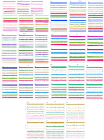
Figure 10
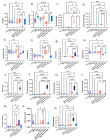
Figure 11

Figure 12

Figure 13
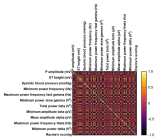
Figure 14
Similar Articles
-
Do genes matter in sleep?-A comprehensive updateRajib Dutta*. Do genes matter in sleep?-A comprehensive update. . 2020 doi: 10.29328/journal.jnnd.1001029; 4: 014-023
-
Impact of mandibular advancement device in quantitative electroencephalogram and sleep quality in mild to severe obstructive sleep apneaCuspineda-Bravo ER*,García- Menéndez M,Castro-Batista F,Barquín-García SM,Cadelo-Casado D,Rodríguez AJ,Sharkey KM. Impact of mandibular advancement device in quantitative electroencephalogram and sleep quality in mild to severe obstructive sleep apnea. . 2020 doi: 10.29328/journal.jnnd.1001041; 4: 088-098
-
Cerebral arterial air embolism with anterior spinal cord syndrome after CT-guided hook-wire localization of Lung mass and pulmonary noduleNoor Sameh Darwich*,Umran Ugur,Mark P Anstadt,J Pedoto. Cerebral arterial air embolism with anterior spinal cord syndrome after CT-guided hook-wire localization of Lung mass and pulmonary nodule. . 2021 doi: 10.29328/journal.jnnd.1001044; 5: 006-015
-
Cortical spreading depolarizations in the context of subarachnoid hemorrhage and the role of ketamineLeandro Custódio do Amaral*. Cortical spreading depolarizations in the context of subarachnoid hemorrhage and the role of ketamine. . 2021 doi: 10.29328/journal.jnnd.1001045; 5: 016-021
-
Update in the Understanding, Diagnosis, and Management of Sturge Weber Syndrome: Case ReportMariana Catalina Garcini Sandoval*, Enrique Espinosa Zúñiga, Martha Guadalupe García Toribio. Update in the Understanding, Diagnosis, and Management of Sturge Weber Syndrome: Case Report. . 2023 doi: 10.29328/journal.jnnd.1001080; 7: 061-064
-
The Potential Use of Dimethyltryptamine against Ischemia-reperfusion Injury of the BrainAttila Kovacs, Anna Mathe, Ede Frecska*. The Potential Use of Dimethyltryptamine against Ischemia-reperfusion Injury of the Brain. . 2024 doi: 10.29328/journal.jnnd.1001097; 8: 050-056
-
Pyridostigmine-Induced Status Epilepticus Rat Model Was Resistant to Increasing Doses of Ramipril: The Latter Triggered Epileptogenesis, Arrhythmia, and Cardiac Ischemia in a Dose-Dependent MannerSherine Abdelmissih*,Monica Gamal,Kerollos M Naeem. Pyridostigmine-Induced Status Epilepticus Rat Model Was Resistant to Increasing Doses of Ramipril: The Latter Triggered Epileptogenesis, Arrhythmia, and Cardiac Ischemia in a Dose-Dependent Manner. . 2025 doi: 10.29328/journal.jnnd.1001106; 9: 010-027
Recently Viewed
-
The relationship between IT consumption and anxiety in Pakistani youthWaqar Husain*,Sehrish Mobeen. The relationship between IT consumption and anxiety in Pakistani youth. Arch Psychiatr Ment Health. 2020: doi: 10.29328/journal.apmh.1001026; 4: 084-086
-
Success, Survival and Prognostic Factors in Implant Prosthesis: Experimental StudyEpifania Ettore*, Pietrantonio Maria, Christian Nunziata, Ausiello Pietro. Success, Survival and Prognostic Factors in Implant Prosthesis: Experimental Study. J Oral Health Craniofac Sci. 2023: doi: 10.29328/journal.johcs.1001045; 8: 024-028
-
Bleeding from Varices: Still a Heavy Burden in Patients with CirrhosisAmitrano L*, Guardascione MA, Saviano S, Martino A, Lombardi G. Bleeding from Varices: Still a Heavy Burden in Patients with Cirrhosis. Ann Clin Gastroenterol Hepatol. 2023: doi: 10.29328/journal.acgh.1001043; 7: 035-037
-
Prevention of workplace violence in ED nursing using the implementation of an educational program and a new reporting toolMaziad Aladwan*,Ekbal Dalahmeh. Prevention of workplace violence in ED nursing using the implementation of an educational program and a new reporting tool. Clin J Nurs Care Pract. 2022: doi: 10.29328/journal.cjncp.1001039; 6: 001-008
-
Which women uses social Internet networks during pregnancy?Sylvie Viaux-Savelon*,Catherine Fouillet,Nicolas Bodeau,Jacky Nizard. Which women uses social Internet networks during pregnancy?. Clin J Obstet Gynecol. 2021: doi: 10.29328/journal.cjog.1001082; 4: 025-032
Most Viewed
-
Evaluation of Biostimulants Based on Recovered Protein Hydrolysates from Animal By-products as Plant Growth EnhancersH Pérez-Aguilar*, M Lacruz-Asaro, F Arán-Ais. Evaluation of Biostimulants Based on Recovered Protein Hydrolysates from Animal By-products as Plant Growth Enhancers. J Plant Sci Phytopathol. 2023 doi: 10.29328/journal.jpsp.1001104; 7: 042-047
-
Sinonasal Myxoma Extending into the Orbit in a 4-Year Old: A Case PresentationJulian A Purrinos*, Ramzi Younis. Sinonasal Myxoma Extending into the Orbit in a 4-Year Old: A Case Presentation. Arch Case Rep. 2024 doi: 10.29328/journal.acr.1001099; 8: 075-077
-
Feasibility study of magnetic sensing for detecting single-neuron action potentialsDenis Tonini,Kai Wu,Renata Saha,Jian-Ping Wang*. Feasibility study of magnetic sensing for detecting single-neuron action potentials. Ann Biomed Sci Eng. 2022 doi: 10.29328/journal.abse.1001018; 6: 019-029
-
Pediatric Dysgerminoma: Unveiling a Rare Ovarian TumorFaten Limaiem*, Khalil Saffar, Ahmed Halouani. Pediatric Dysgerminoma: Unveiling a Rare Ovarian Tumor. Arch Case Rep. 2024 doi: 10.29328/journal.acr.1001087; 8: 010-013
-
Physical activity can change the physiological and psychological circumstances during COVID-19 pandemic: A narrative reviewKhashayar Maroufi*. Physical activity can change the physiological and psychological circumstances during COVID-19 pandemic: A narrative review. J Sports Med Ther. 2021 doi: 10.29328/journal.jsmt.1001051; 6: 001-007

HSPI: We're glad you're here. Please click "create a new Query" if you are a new visitor to our website and need further information from us.
If you are already a member of our network and need to keep track of any developments regarding a question you have already submitted, click "take me to my Query."







